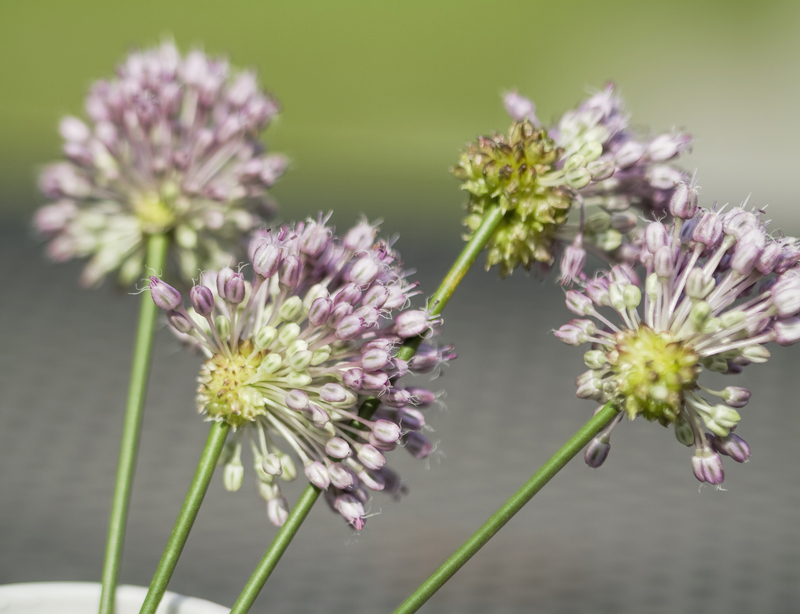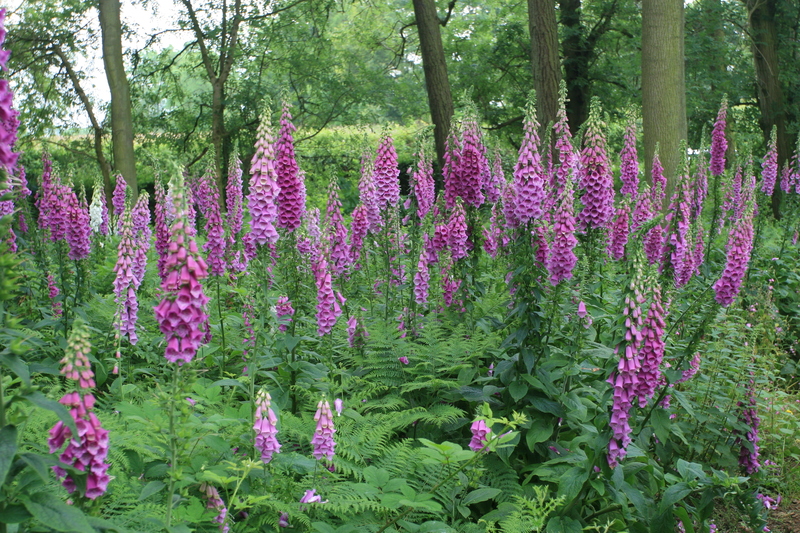Container Gardening Techniques for Every Gardener
Posted on 29/08/2025
Container Gardening Techniques for Every Gardener
Container gardening is a flexible and rewarding method for growing lush gardens in practically any space. Whether you're tending a balcony in the city, a small patio, or accenting a spacious backyard, container gardening techniques open the door to a vibrant world of flowers, vegetables, and herbs, even in the smallest spaces. This comprehensive guide will walk you through practical tools, creative tips, and proven strategies perfect for every gardener--from beginner to advanced.
Why Choose Container Gardening?
Container gardening has surged in popularity due to its adaptability and ease of management. With changing climates, urbanization, and busy lifestyles, more people seek ways to bring green into their lives without the commitment of expansive garden beds. Here are some key benefits:
- Space optimization: Grow plants in limited space--balconies, patios, rooftops, or windowsills.
- Mobility: Easily move plants to chase the sun or protect them from harsh weather.
- Pest control: Reduce pest issues by isolating plants above ground level.
- Personalization: Decorate creatively with different containers, sizes, and landscapes.
- Soil management: Control soil quality for each plant, meaning healthier, happier flora.

Getting Started with Container Gardening
Choosing the Right Containers
Your choice of container plays a major role in your garden's success. Here are key considerations:
- Size: Ensure each container is large enough for the plant's mature size, including root space and soil volume.
- Material: Options include terracotta, plastic, ceramic, wood, and metal. Each offers pros and cons regarding insulation, weight, durability, and appearance.
- Drainage: Proper drainage holes are essential to prevent waterlogging and root rot.
- Color and Shape: Lighter-colored pots reflect heat, keeping roots cooler, while shapes affect root growth patterns and aesthetic arrangements.
Best Practices for Container Preparation
- Cleanliness: Wash and disinfect old containers to remove pathogens.
- Improved Drainage: Layer the bottom of the container with pebbles, broken pottery, or mesh screens before adding soil.
- Soil Management: Use high-quality, well-draining container potting mix instead of regular garden soil, which can be too dense.
Soil Mixes and Fertilizing Techniques
The Importance of the Right Potting Mix
The soil mix is the backbone of successful container gardening. Traditional garden soil is often heavy and compacts easily in containers, which impairs root growth and drainage.
- Opt for a premixed potting soil designed specifically for containers, or make your own blend with equal parts peat moss (or coconut coir), perlite (or coarse sand), and compost.
- For succulents or cacti, select a gritty, fast-draining mix; for vegetables and flowers, ensure the blend is rich in organic matter.
Fertilization is also crucial in container gardening because nutrients leach away with regular watering. Use slow-release granular fertilizers mixed into the soil, supplement with water-soluble fertilizers every two to four weeks during the growing season, and always follow label instructions.
Selecting the Best Plants for Containers
Flowers, Herbs, and Vegetables
Knowing what to plant is as important as knowing how. Here are popular choices that thrive in containers:
- Herbs: Basil, mint, rosemary, thyme, parsley, and chives
- Vegetables: Lettuce, tomatoes, radishes, peppers, eggplants, beans, and dwarf carrots
- Flowers: Petunias, marigolds, geraniums, pansies, begonias, and calibrachoa
- Fruit: Strawberries, dwarf citrus trees, and blueberries
- Succulents: Aloe, echeveria, jade plant, sedum
For the best results in container gardening, choose compact or dwarf varieties, check local planting guides for seasonal best picks, and pay attention to the light and water needs of your chosen species.
Plants for Different Light Conditions
- Full sun: Tomatoes, peppers, most herbs, zinnias, marigolds
- Part shade: Lettuce, spinach, impatiens, begonias
- Full shade: Ferns, hostas, coral bells, caladiums
Tip: Grouping containers by light needs makes watering and maintenance simpler and more effective.
Watering Tips and Moisture Control
Containers dry out much faster than in-ground gardens, making proper watering techniques essential for healthy plants.
- Daily Check: During hot or windy weather, inspect soil moisture daily; water when the top inch feels dry.
- Water Thoroughly: Soak the soil until water drains from the bottom to encourage deep root growth.
- Self-Watering Pots: Consider self-watering containers or adding water reservoirs for extra convenience.
- Mulching: Apply a layer of organic mulch (such as bark, straw, or coconut coir) to reduce evaporation and maintain consistent moisture.
- Avoid Overwatering: Always empty saucers under pots to prevent root rot and waterlogged soil.
Seasonal Watering Adjustments
Adjust your watering schedule with the seasons. In spring and fall, less frequent watering may be needed. During summer, heat may necessitate twice-daily watering for some sun-loving plants. Remember, plants in terracotta dry out more quickly than those in plastic or glazed ceramic.
Creative Container Gardening Ideas
Vertical Gardening and Hanging Planters
- Use hanging baskets for cascading flowers or trailing herbs like thyme and oregano.
- Install pocket planters, stacked pots, or shelving to create a vertical wall of greens, perfect for small spaces.
- Consider rail planters attached to balconies for extra growing space.
Repurposed and Decorative Containers
- Transform old buckets, crates, teapots, or tins into unique container gardens--ensure proper drainage holes.
- Group containers of varying heights and colors for dynamic visual interest.
- Paint or decorate pots to match your exterior decor or personalize your garden vibe.
Theme Gardens in Containers
- Herb Garden: Plant multiple culinary herbs in one large pot for a fragrant, edible centerpiece.
- Pollinator Garden: Use containers filled with nectar-rich flowers to attract bees and butterflies.
- Shade Garden: Group shade-lovers in a cool corner for a calming green retreat.
- Edible Salad Bowl: Mix leaf lettuces, spinach, and chives for instant harvest outside your kitchen door.
Maintenance & Troubleshooting Tips
Regular Container Care
- Check for pests beneath leaves and on the soil surface; use organic insecticidal soap if needed.
- Pinch or deadhead spent flowers to encourage more blooms and maintain a tidy appearance.
- Feed regularly according to your plant's needs, especially heavy-flowering annuals and veggies.
- Repot when plants outgrow their containers--fresh soil and a slightly bigger pot will reinvigorate root growth.
- Monitor for rootbound plants by checking for visible roots protruding from drainage holes.
Solving Common Container Gardening Issues
- Poor Drainage: Ensure adequate holes and use a well-draining soil mix.
- Wilting: Could indicate either under- or over-watering, or root rot. Check soil moisture with your finger or a meter.
- Yellow Leaves: Often a sign of nutrient deficiency or poor drainage.
- Pests/ Diseases: Remove affected leaves promptly and use organic remedies where possible.
Container Gardening for Every Lifestyle
For Beginners
- Start small with easy-care plants like herbs or annuals.
- Choose self-watering pots to reduce maintenance stress.
- Track your successes and challenges in a gardening journal.
For Seniors or Those with Mobility Challenges
- Use raised containers or vertical gardens to avoid bending down.
- Lightweight plastic or fabric grow bags are easier to handle.
- Invest in ergonomic tools for easier planting and maintenance.
For Urban Dwellers
- Maximize space with hanging baskets, wall-mounted planters, and railing containers.
- Choose lightweight containers for balconies and rooftops to prevent overloading.
- Grow compact, productive varieties suited to your sun exposure and microclimate.
Seasonal Strategies for Container Gardening
Spring and Summer
- Refresh potting mix and clean containers before planting new crops.
- Fertilize regularly as plants enter rapid growth periods.
- Monitor for pests and water needs as temperatures rise.
Fall and Winter
- Choose cool-season crops such as pansies, kale, and ornamental cabbages.
- Move containers to sheltered spots to prevent frost damage.
- For perennials, insulate pots with burlap or bubble wrap; or move sensitive plants indoors if possible.

Frequently Asked Questions about Container Gardening
How often should I water my container plants?
Check the soil daily during warm months. Water when the top inch is dry, and always water thoroughly until it drains out the bottom.
Can I reuse potting soil from last season?
Yes, but it's best to refresh it by removing any roots, mixing in fresh compost, and checking for pests or diseases. For best results, replace potting soil every 2-3 years.
What's the best way to fertilize container gardens?
Use a balanced, slow-release granular fertilizer at planting time, and supplement with a liquid solution every two to four weeks during the growing season.
Can I grow vegetables in containers?
Absolutely! Many vegetables like lettuce, tomatoes, peppers, and herbs thrive in pots. Choose compact or dwarf varieties and ensure they get at least 6-8 hours of sun.
Conclusion: Embrace the Joy of Container Gardening
Container gardening is an exciting, accessible, and endlessly creative way to grow your own plants, regardless of space or experience level. Whether you're greening up a city balcony, decorating a porch, or simply trying your hand at gardening for the first time, these container gardening techniques will set you up for vibrant success.
Experiment boldly, nurture your plants, and you'll soon discover why so many have fallen in love with the flexibility and beauty of cultivating gardens in pots. From tiny succulents to lush edible landscapes, container gardens truly offer something for every gardener!
Ready to take your gardening journey to the next level? Grab a pot, pick your favorite plant, and start your container garden today!

